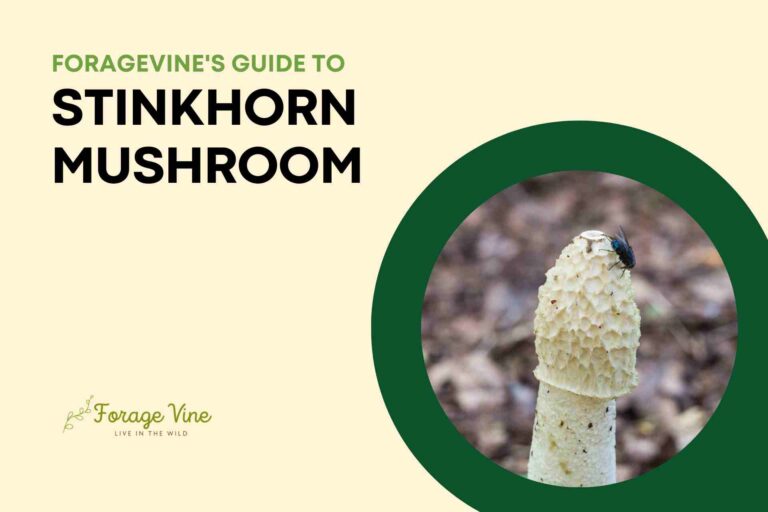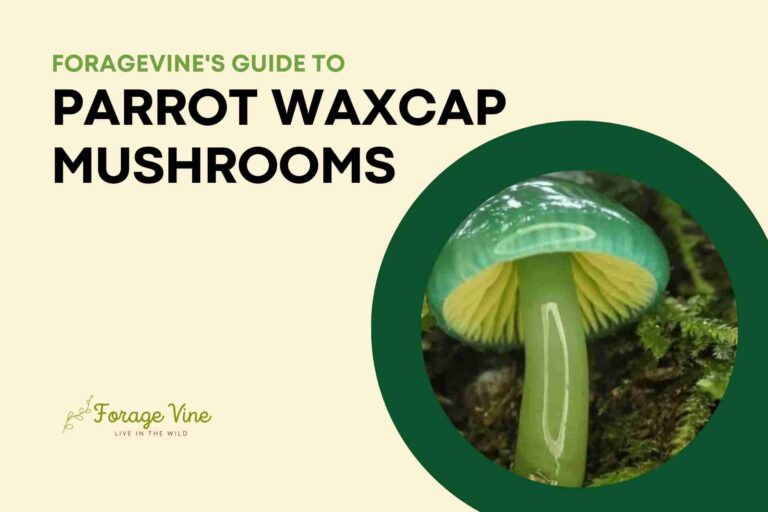Shaggy Mane Mushrooms: How to Identify and grow them and are they edible?
Are you looking to cultivate a unique edible mushroom? If so, the shaggy mane could be the perfect fit! So if you want to discover more about these fascinating fungi, read on, and let’s get started! In this guide, we will look at everything there is to know about shaggy mane mushrooms – from identification and growing instructions to understanding their health benefits.
What are Shaggy Mane Mushrooms – An Overview
Shaggy Mane Mushrooms, also known as Coprinellus comatus, are a unique species of mushrooms known for their slimy texture and parasol-shaped heads. They grow in many different environments and are one of the few edible mushrooms safe for consumption. In this ultimate guide to Shaggy Mane Mushrooms, you will get an overview of the mushroom’s appearance, habitat, taste, and growing methods. We will also discuss identifying it from other species and the potential health benefits of eating the delicacy. With so much to know about these fantastic mushrooms, there will surely be something for everyone!
How to Identify Shaggy Mane Mushrooms – Characteristics, Appearance & Growth
Identifying Shaggy Mane Mushrooms can be challenging, but these distinctive mushrooms are worth seeking. Identifying this unique mushroom will significantly improve your chances of spotting one outdoors! They vary in color from young white to a deep yellowish brown when mature, with a conspicuous felt-like ring around the base of the cap. Though they “mature” quickly and can have a short lifespan of just a few days, they are striking in their resemblance to slender white bird feathers. There are also several other defining characteristics – Shaggy Manes have striated cup-shaped caps and hollow stems usually measuring 5-10cm long and 1-2 cm wide. Additionally, they grow solitary or in small clusters in reasonably open habitats like grassy fields or gardens.
Where Do Shaggy Mane Mushrooms Grow?
These unique wild mushrooms typically grow in grassy areas, often grouped in clusters and circular formations. They are relatively easy to find and can be spotted in temperate climates across Europe and North America. In addition, they also thrive in some parts of Asia and Australia. While they can quickly grow in many previously disturbed soil settings, they prefer soils with a balanced pH level. With the suitable terrain and a knack for recognizing their distinct appearance, anyone could quickly learn how to identify these edible mushrooms successfully!
Is Shaggy Mane mushroom Edible – Benefits and Risks
Yes, the Shaggy mane mushroom is edible!
Many mushroom lovers are curious to learn if the unique look of the Shaggy Mane is matched with a taste that stands out. The answer, luckily, is a resounding “yes!”
This type of mushroom has been eaten by humans for centuries and is prized worldwide for its forward flavor. However, as with consuming any wild mushrooms, there are potential risks. As such, it is essential to practice proper identification. If you’re lucky enough to find some fascinating mushrooms, you’ll enjoy their flavourful, tender caps only if done right. They are delectable and offer various nutritional benefits such as dietary proteins and other minerals like zinc, magnesium, and Iron. However, only indulge in Shaggy mane mushrooms if you are sure of their identification and are confident with foraging for edible mushrooms! Thus, when consumed correctly and wisely, these gorgeous creatures can provide an exciting taste sensation and various health benefits.
Shaggy Mane Mushroom Look-Alikes
When foraging for shaggy mane mushrooms, knowing how to identify them is essential, as some look-alikes can be mistaken. One of these is the common inky cap mushroom, generally identified by its black spore print generated on a clean piece of paper after it is dropped from the umbrella-shaped head of the mushroom. Though not an actual look-alike, another species known as Corozuelo de Cardo might appear similar until up close. This species has white gills and brown spore prints, unlike the shaggy mane’s pure white gills and black spores. Furthermore, the texture on the shaggy mane’s cap, which, once mature, turns into fine scales rather than gills that grow much too late, should serve as an additional distinguishing point between these two species!
How to Grow Shaggy Mane Mushrooms – A Step-by-Step Guide
Growing your Shaggy Mane Mushrooms at home is an exciting and rewarding experience! It may take a bit of patience and dedication to get the hang of it, but with the right steps and tips, you can be successful. To help you along, here is a step-by-step guide on how to grow Shaggy Mane Mushrooms:
- Find a spot in your yard or garden with dappled shade.
- Purchase locally sourced Shaggy Mane Mushroom spores.
- Prepare the growing bed by digging in compost or nutrient-rich soil.
- Sow the spores in a shallow layer and cover them with more soil or compost.
- Keep the temperature and moisture levels consistent for optimal growth.
With these steps, you can be sure you’ll have a plentiful bounty in no time!
Tips for Growing Shaggy Mane Mushrooms in Your Home Garden
If you’ve ever wanted to grow your mushrooms in the comfort of your home, Shaggy Mane mushrooms are an excellent choice. They are considered one of the tastiest varieties and require no special attention or expensive equipment. The key to success when growing any mushroom at home is quantity and timing; research must be done to maximize the chances of a successful harvest. But don’t worry; anyone can become a successful farmer with adequate information and determination. Start by acquiring top-quality spores for inoculation, followed by preparing the substrate – the best used is composted hardwood chips mixed with straw. Rest assured that within weeks your home garden could be hosting Shaggy Mane mushrooms in no time!
How to Clean Shaggy Mane Mushrooms
Cleaning shaggy mane mushrooms is easy but requires a bit of vigilance to remove dirt and leaf litter without damaging the delicate mushroom. To begin, gently brush the mushrooms with a pastry or soft-bristled brush to remove any surface dirt or residue. As shaggy manes are easily bruised and transport moisture when handled, exercising caution can help keep them fresh for cooking. Once the bulk of debris has been removed, moving into the washing step is safe. Rinse your mushrooms in cool water, being sure not to leave them sitting in there too long as they will absorb too much liquid and become soggy. After they’ve been rinsed off and determined to be free of dirt, shake off any excess liquid and place them on paper towels until ready to use. These steps will ensure your shaggy manes are thoroughly clean and safe for consumption!
How to Store Shaggy Mane Mushrooms
Proper storage is essential for preserving the freshness of shaggy mane mushrooms and maximizing their shelf life. Most species can be stored in the refrigerator in a plastic bag or container for up to a week, but it is best to use them as soon as possible. Once they are cooked, they should be used the same day. Alternatively, they can be dried and stored in an airtight container at room temperature or slightly cooler temperatures; however, if you plan to preserve them this way, process them properly before storing them. By following these simple steps, you will get the most out of every shaggy mane mushroom you find!
How to Cook Shaggy Mane Mushrooms
Cooking shaggy mane mushrooms can be a surprisingly enjoyable experience! Not only do these gilled mushrooms have a delicious taste and texture when cooked, but they are also quite simple to prepare. Boiling or poaching them is the most popular method, ensuring the mushrooms don’t become tough or rubbery. You can also sauté them in oil with some garlic and herbs for extra flavor or try roasting them to bring out deeper flavors. With just a few steps, you’ll enjoy the delightful umami taste of shaggy manes cooked to perfection!
What Do Shaggy Manes Taste Like?
Shaggy mane mushrooms have a somewhat unusual taste; some describe it as a combination of almonds, hazelnuts, and a hint of peppery aftertaste. The texture, when cooked, is similar to that of other mushrooms – a firm with a slight crunch. Those who enjoy the flavor of shaggy manes may use them in various dishes; they make an excellent topping for omelets and pizza or can add flavor to soups and salads. Ultimately, whether or not someone likes the flavor and texture of shaggy manes is up to personal preference and tastebuds!
Shaggy Mane Mushroom Recipes
When cooking with Shaggy Mane Mushrooms, the possibilities are endless. Whether trying something new or using a classic recipe, you can find a delicious way to incorporate these mushrooms into your meals. You can make soups, salads, stir-fries, and main dishes sure to please your palate. There are also recipes for sweet treats like ice cream and truffles featuring flavors of Shaggy Mane Mushrooms. With so many recipes highlighting this unique mushroom, it is time to explore its delicious potential!
How to Get Rid of Shaggy Mane Mushrooms
Getting rid of shaggy mane mushrooms can be tricky, as these mushrooms have a natural resilience to most chemical treatments. Fortunately, there are some helpful methods to get rid of pesky fungi:
- A mixture of 10% hydrogen peroxide and water can be sprayed over the affected area to help eradicate these fungi from your lawn or garden.
- You can use manual techniques like carefully digging around the mushroom and removing it along with its root system.
- Edging your lawns regularly removes any excess soil that Shaggy Manes may need to grow and thus help prevent further growth.
With these tried and tested methods, you won’t have any trouble removing shrubby mushroom growths in no time!



